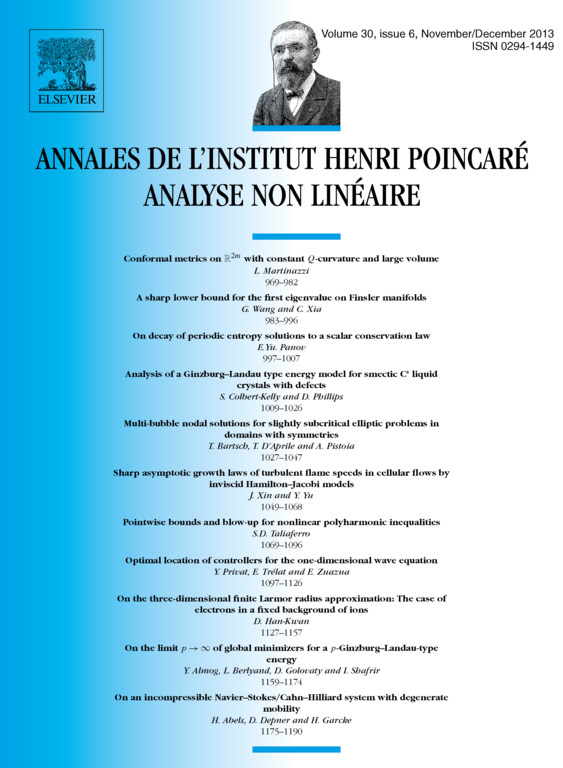Sharp asymptotic growth laws of turbulent flame speeds in cellular flows by inviscid Hamilton–Jacobi models
Jack Xin
Department of Mathematics, University of California at Irvine, Irvine, CA 92697, USAYifeng Yu
Department of Mathematics, University of California at Irvine, Irvine, CA 92697, USA

Abstract
We study the large time asymptotic speeds (turbulent flame speeds ) of the simplified Hamilton–Jacobi (HJ) models arising in turbulent combustion. One HJ model is G-equation describing the front motion law in the form of local normal velocity equal to a constant (laminar speed) plus the normal projection of fluid velocity. In level set formulation, G-equations are HJ equations with convex ( type) but non-coercive Hamiltonians. The other is the quadratically nonlinear ( type) inviscid HJ model of Majda–Souganidis derived from the Kolmogorov–Petrovsky–Piskunov reactive fronts. Motivated by a question posed by Embid, Majda and Souganidis (1995) [10], we compare the turbulent flame speeds ʼs from these inviscid HJ models in two-dimensional cellular flows or a periodic array of steady vortices via sharp asymptotic estimates in the regime of large amplitude. The estimates are obtained by analyzing the action minimizing trajectories in the Lagrangian representation of solutions (Lax formula and its extension) in combination with delicate gradient bound of viscosity solutions to the associated cell problem of homogenization. Though the inviscid turbulent flame speeds share the same leading order asymptotics, their difference due to nonlinearities is identified as a subtle double logarithm in the large flow amplitude from the sharp growth laws. The turbulent flame speeds differ much more significantly in the corresponding viscous HJ models.
Cite this article
Jack Xin, Yifeng Yu, Sharp asymptotic growth laws of turbulent flame speeds in cellular flows by inviscid Hamilton–Jacobi models. Ann. Inst. H. Poincaré Anal. Non Linéaire 30 (2013), no. 6, pp. 1049–1068
DOI 10.1016/J.ANIHPC.2012.11.004